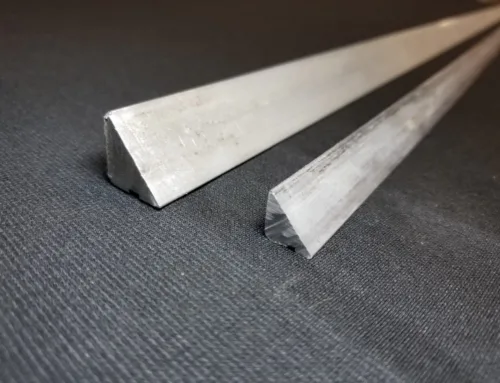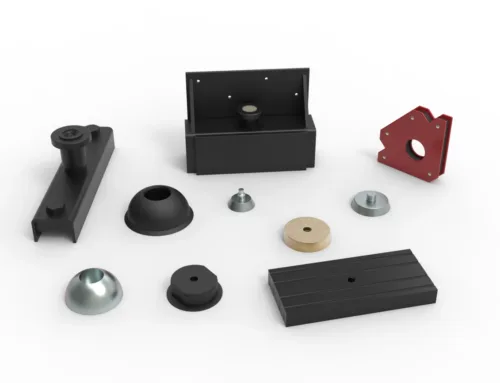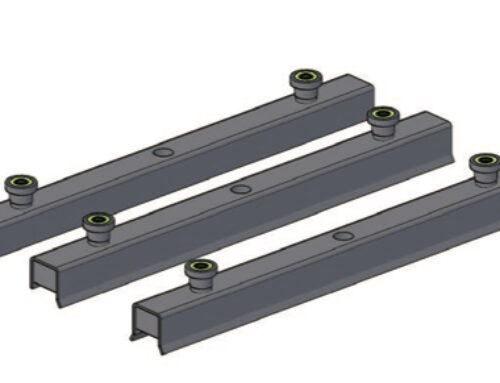Are you trying to understand the difference between Maximum Operating Temperature and Curie Temperature when it comes to magnetic materials? You’re not alone. Whether you’re an engineer, buyer, or designer working with magnets in industries like motors, sensors, or electronics, knowing these temperature limits is critical for making smart choices.
Why? Because these temperatures directly affect magnetic performance, reliability, and the lifespan of your components. Push a magnet beyond its maximum operating temperature, and you risk permanent damage or reduced efficiency. Cross the Curie temperature, and the magnet loses its magnetic properties altogether—often irreversibly.
In this article, you’ll discover what sets these two key temperature points apart, how they influence your magnetic material selection, and how NBAEM’s high-quality magnets are engineered to meet your toughest thermal demands. Ready to dive in?
What is Maximum Operating Temperature
Maximum Operating Temperature (MOT) is the highest temperature at which a magnetic material can function reliably without significant loss of its magnetic properties. Simply put, it’s the temperature limit you should not exceed to keep the magnet working well over time.
This temperature matters a lot for product longevity and reliability. When a magnet operates at or below its MOT, it maintains strength, stability, and performance. But if the temperature goes beyond this limit, the magnet can start losing magnetization, leading to performance issues and even permanent damage.
Typical MOT values depend on the type of magnetic material:
- Neodymium magnets: Usually have MOTs between 80°C to 150°C, depending on the grade and composition.
- Ferrite magnets: More heat resistant, often with MOTs as high as 250°C to 300°C.
- Samarium-cobalt magnets: Known for higher MOTs, sometimes up to 350°C.
Several factors influence the MOT:
- Material composition and grade
- Manufacturing quality and coatings
- Magnetic field strength and load conditions
- Environmental factors like moisture and mechanical stress
Exceeding the Maximum Operating Temperature leads to gradual performance degradation. This means magnetic strength drops, the magnet becomes unstable, and its overall life cycle shortens. The damage might be irreversible if the temperature remains high for extended periods, reducing reliability and causing costly failures in applications like motors, sensors, or electronics.
Understanding the MOT helps engineers and users select the right magnet type and design proper thermal management to avoid failure under real-world operating conditions.
What is Curie Temperature

The Curie temperature is the point at which a magnetic material loses its permanent magnetism. It’s a fundamental property tied to the physics of magnetism. Below this temperature, materials like neodymium or ferrite are ferromagnetic, meaning their atomic magnetic moments line up and create strong magnetic fields. Once the material hits the Curie temperature, it undergoes a phase transition and becomes paramagnetic. In this state, the atoms’ magnetic moments are randomly oriented, causing the material to lose its magnetic strength.
Typical Curie temperatures vary by material. For example, neodymium magnets have a Curie temperature around 310 to 400°C, depending on their exact composition, while ferrite magnets usually reach around 450°C to 460°C. Once a magnet crosses this temperature, its magnetic properties don’t come back. This loss is permanent—exceeding the Curie temperature essentially kills the magnet’s ability to function as a magnet.
Understanding the Curie temperature is crucial for industries using magnetic materials, as it sets an absolute thermal limit beyond which magnetic performance cannot be restored.
Comparing Maximum Operating Temperature vs Curie Temperature
The Maximum Operating Temperature and Curie Temperature are both crucial when working with magnetic materials, but they mean very different things.
- Maximum Operating Temperature is the highest temperature a magnet can safely handle without losing performance or suffering damage over time.
- Curie Temperature is the point where the magnet’s material loses its ferromagnetic properties altogether—it stops being magnetic.
Why Maximum Operating Temperature is below Curie Temperature
Manufacturers set the maximum operating temperature well below the Curie temperature. That’s because below the Curie point, magnets still work but may start to lose strength if pushed too high or for too long. Staying below the maximum operating temperature ensures the magnet lasts longer without performance degradation or irreversible damage.
For example, a neodymium magnet might have a Curie temperature around 310–320°C but a max operating temperature closer to 80–150°C, depending on its grade. Running it near or above the Curie point causes permanent loss of magnetism, while exceeding the max operating temperature gradually weakens the magnet.
Risks of exceeding these temperatures
-
Beyond Maximum Operating Temperature:
You risk accelerated loss of magnetic strength, mechanical breakdown, or shorter product life. It’s a slow burn of performance decline.
-
Beyond Curie Temperature:
The magnetic material undergoes a phase change from ferromagnetic to paramagnetic. This change is irreversible under normal conditions, resulting in permanent loss of magnetism.
Common misconceptions
- Some think magnets stop working immediately once they hit maximum operating temperature. Actually, it’s more of a warning limit—not an instant failure point.
- Others confuse maximum operating temperature with Curie temperature, assuming they are nearly the same. They’re not. Maximum operating temperature is a safe operational limit; Curie temperature is a physical threshold where magnetism vanishes.
Knowing the difference helps avoid costly mistakes and ensures magnets perform reliably in real-world applications.
Practical Implications for Engineers and Buyers

Knowing the difference between Maximum Operating Temperature and Curie Temperature is key when picking magnets for motors, sensors, electronics, and other applications. Here’s why it matters:
-
Choosing the Right Magnet
Understanding these temperature limits helps you select magnets that won’t lose strength or break down in your device’s working environment. For example, neodymium magnets offer great strength but have lower maximum operating temperatures compared to ferrite magnets, which can handle higher heat but with less magnetic power.
-
Thermal Management and Design
It’s not just about magnet choice. Good thermal management—like heat sinks, cooling systems, or proper airflow—keeps magnets within their safe operating range, preventing costly failures or reduced performance over time.
-
Warranty and Safety Considerations
Operating magnets above their maximum operating temperature can void warranties and create safety risks. Excess heat doesn’t just lower magnetic strength—it can cause damage that’s irreversible, especially when temperatures approach the Curie point.
-
Long-Term Performance
Staying within these temperature boundaries means more reliable, consistent magnet performance through the life of your product. This translates into fewer replacements and maintenance issues down the line.
For more on selecting magnets that handle high temperatures, check out NBAEM’s lineup of high temperature magnets. They offer reliable solutions tailored for tough thermal environments, ensuring you get the best performance and durability for your projects.
NBAEM’s Approach to Temperature-Tolerant Magnetic Materials
At NBAEM, we understand the challenges of working with magnets in high temperature environments. That’s why our product lineup focuses on magnetic materials designed to perform reliably even near their maximum operating temperature limits. Whether you need neodymium magnets with enhanced thermal resistance or ferrite magnets that hold up well under heat, we offer options built for demanding industrial applications.
Our manufacturing process is tailored for thermal stability. We use precise sintering and coating techniques to minimize magnetic degradation, keeping your magnet’s strength consistent over time. Plus, we closely control material composition to ensure our magnets don’t lose their properties as they approach temperature limits.
Customization is a key part of what we do. NBAEM can adjust magnet grades and coatings to match your specific thermal requirements, helping you get the right balance between cost and performance. This is especially helpful for motors, sensors, and electronics that operate under tough conditions.
For instance, one client in the automotive sector relied on our high-temperature neodymium magnets for an electric motor prototype. With our tailored solution, they maintained magnet strength up to 120°C, well above standard limits, improving overall motor efficiency and durability.
In short, NBAEM’s approach combines material science and flexible production to meet the unique needs of customers in the U.S. market who demand high-performance magnets under heat stress.





[…] Over-temperature Operation: Exceeding the maximum operating temperature (MOT) can cause irreversible loss of magnetism, especially in NdFeB magnets. Running magnets above their thermal limits leads to permanent drops in remanence (Br) and coercivity (Hc). Always check the magnet’s temperature rating and consider the Curie temperature to avoid performance degradation. For detailed info on temperature effects, see our guide on maximum operating temperature vs Curie temperature. […]